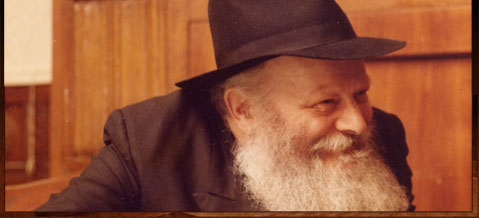Mrs. Sterna Malka Katz
10 January 2024
Throughout my high school years and into seminary, I became very involved in a girls’ youth group called Bnos Chabad. A small organization in the sixties, one of the things Bnos Chabad would do was to arrange “Shabbatons.” We would reach out to different communities, groups or schools, and they would send their students to spend Shabbat with us in Crown Heights.
In 1964, we got a call from a Reform congregation in New Jersey about a group of twelve- and thirteen-year-old girls interested in coming to us. We prepared a lovely Shabbat for them, and they enjoyed a beautiful program.
After Shabbat, one of our Bnos Chabad girls whose family was hosting some of these children mentioned to me that one of the girls who stayed in her house was not Jewish. Jewish identity follows the mother, and while this girl’s father was Jewish, her mother was not.
In those days, intermarriage was much less common than it is today, so when the girls’ rabbi later came to pick up the children, I explained to him that, given the nature of the program, he should have let us know that a girl who isn’t Jewish would be attending. “Well,” he replied apologetically, “the mother is thinking of converting, and she wants to raise her daughter as a Jew.”
Every time we ran one of these programs, I would write up a report for the Rebbe. This time, in his reply, the Rebbe sent me newspaper clippings from two different Jewish newspapers, one from Atlanta, Georgia, and I think the other was from Seattle, Washington.
The two articles, one from a young man and the other from a young woman, presented a similar complaint: After being brought up thinking that they were Jewish, these two young people went on to get engaged to other Jews. But while the officiating rabbis were doing their research, they found out that the mothers had, in fact, not converted properly. The experience had caused the authors a lot of anguish, and they wrote about how unhappy they were that the rabbis who had originally dealt with their parents had not advised them to go through a Halachic conversion that would be accepted in all Jewish communities. The Rebbe was suggesting that this girl should undergo a proper conversion before any such complications came up.
I was taken aback by these articles – and by the Rebbe’s universal concern. I was young, and these sensitive issues weren’t my forte, so I passed all this information on to the Lubavitch Youth Organization which oversaw our activities, and they agreed to follow up.
Months later, I had written another letter to the Rebbe, about a very personal matter. When I received my answer, I saw that at the bottom of the letter, the Rebbe wrote an additional note: “What’s happening with the girl in New Jersey?”
There was so much else going on, but the Rebbe hadn’t forgotten that young girl who might have a problem getting married many years down the road. I was astounded to see how this story had stayed in the Rebbe’s mind; he didn’t forget a single person.
A short time later, I saw another example of his concern: The Lubavitch Youth Organization had a branch called the College and University Council, for Jewish student outreach, and I was asked to oversee the annual seminar they held for girls, known as the “Pegisha,” or “Encounter with Chabad.” So for a few years, I was involved in the Pegisha and worked closely with Professor Harold Nierenberg – the dean of Long Island University – who was very active in helping to put them on.
In those years, there would be two seminars held every winter break, when all of the college kids were off. There was one for the boys held in the last week of December, and then another for the girls in the first week of January. Although there were only a small number of shluchim in those days, Chabad rabbis from different areas and communities would try to get college kids involved and send them to Crown Heights for the Pegisha weekends.
In 1964 or ‘65, we had a very successful Pegisha. There was a great atmosphere among all the girls, and they became very friendly with each other. When I wrote my report to the Rebbe – about the program, the speakers, further activities, and so on – I mentioned that we thought it might be a good idea to create a newsletter for the group. It would be a way to keep up with them, and if we wrote up a list of the girls’ names and addresses, they would also be able to correspond and keep in touch with each other.
Although the Rebbe would normally not respond to these reports right away, to my surprise, I got an answer back just a short time afterwards. “The newsletter is a good idea,” wrote the Rebbe, “but we should not list the girls’ names and addresses.” He reasoned that since these girls were secular, some of them might not want to be associated with Lubavitch in a public way, and might feel uncomfortable if we published their names as participants in our program. And, if they did become embarrassed, this might sour their attitude towards Judaism, in general. We needed to respect their privacy.
Once again, I was struck by how sensitive the Rebbe was to these girls, and at how they might be impacted by our actions. The range of the Rebbe’s concern was vast.
Raised by Rabbi Moshe Yitzchok and Rivkah Hecht, Chabad emissaries in New Haven, Connecticut, Mrs. Sterna Malka Katz returned to the city in 1967 with her husband, and has served there as a Chabad emissary and educator ever since. She was interviewed in May 2023.
Throughout my high school years and into seminary, I became very involved in a girls’ youth group called Bnos Chabad. A small organization in the sixties, one of the things Bnos Chabad would do was to arrange “Shabbatons.” We would reach out to different communities, groups or schools, and they would send their students to spend Shabbat with us in Crown Heights.
In 1964, we got a call from a Reform congregation in New Jersey about a group of twelve- and thirteen-year-old girls interested in coming to us. We prepared a lovely Shabbat for them, and they enjoyed a beautiful program.
After Shabbat, one of our Bnos Chabad girls whose family was hosting some of these children mentioned to me that one of the girls who stayed in her house was not Jewish. Jewish identity follows the mother, and while this girl’s father was Jewish, her mother was not.
In those days, intermarriage was much less common than it is today, so when the girls’ rabbi later came to pick up the children, I explained to him that, given the nature of the program, he should have let us know that a girl who isn’t Jewish would be attending. “Well,” he replied apologetically, “the mother is thinking of converting, and she wants to raise her daughter as a Jew.”
Every time we ran one of these programs, I would write up a report for the Rebbe. This time, in his reply, the Rebbe sent me newspaper clippings from two different Jewish newspapers, one from Atlanta, Georgia, and I think the other was from Seattle, Washington.
The two articles, one from a young man and the other from a young woman, presented a similar complaint: After being brought up thinking that they were Jewish, these two young people went on to get engaged to other Jews. But while the officiating rabbis were doing their research, they found out that the mothers had, in fact, not converted properly. The experience had caused the authors a lot of anguish, and they wrote about how unhappy they were that the rabbis who had originally dealt with their parents had not advised them to go through a Halachic conversion that would be accepted in all Jewish communities. The Rebbe was suggesting that this girl should undergo a proper conversion before any such complications came up.
I was taken aback by these articles – and by the Rebbe’s universal concern. I was young, and these sensitive issues weren’t my forte, so I passed all this information on to the Lubavitch Youth Organization which oversaw our activities, and they agreed to follow up.
Months later, I had written another letter to the Rebbe, about a very personal matter. When I received my answer, I saw that at the bottom of the letter, the Rebbe wrote an additional note: “What’s happening with the girl in New Jersey?”
There was so much else going on, but the Rebbe hadn’t forgotten that young girl who might have a problem getting married many years down the road. I was astounded to see how this story had stayed in the Rebbe’s mind; he didn’t forget a single person.
A short time later, I saw another example of his concern: The Lubavitch Youth Organization had a branch called the College and University Council, for Jewish student outreach, and I was asked to oversee the annual seminar they held for girls, known as the “Pegisha,” or “Encounter with Chabad.” So for a few years, I was involved in the Pegisha and worked closely with Professor Harold Nierenberg – the dean of Long Island University – who was very active in helping to put them on.
In those years, there would be two seminars held every winter break, when all of the college kids were off. There was one for the boys held in the last week of December, and then another for the girls in the first week of January. Although there were only a small number of shluchim in those days, Chabad rabbis from different areas and communities would try to get college kids involved and send them to Crown Heights for the Pegisha weekends.
In 1964 or ‘65, we had a very successful Pegisha. There was a great atmosphere among all the girls, and they became very friendly with each other. When I wrote my report to the Rebbe – about the program, the speakers, further activities, and so on – I mentioned that we thought it might be a good idea to create a newsletter for the group. It would be a way to keep up with them, and if we wrote up a list of the girls’ names and addresses, they would also be able to correspond and keep in touch with each other.
Although the Rebbe would normally not respond to these reports right away, to my surprise, I got an answer back just a short time afterwards. “The newsletter is a good idea,” wrote the Rebbe, “but we should not list the girls’ names and addresses.” He reasoned that since these girls were secular, some of them might not want to be associated with Lubavitch in a public way, and might feel uncomfortable if we published their names as participants in our program. And, if they did become embarrassed, this might sour their attitude towards Judaism, in general. We needed to respect their privacy.
Once again, I was struck by how sensitive the Rebbe was to these girls, and at how they might be impacted by our actions. The range of the Rebbe’s concern was vast.
Raised by Rabbi Moshe Yitzchok and Rivkah Hecht, Chabad emissaries in New Haven, Connecticut, Mrs. Sterna Malka Katz returned to the city in 1967 with her husband, and has served there as a Chabad emissary and educator ever since. She was interviewed in May 2023.





